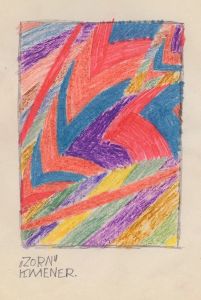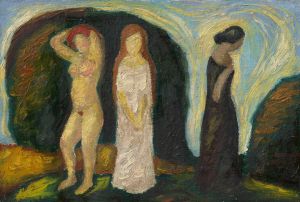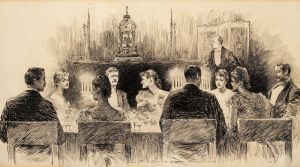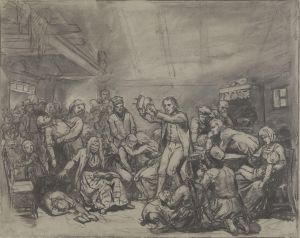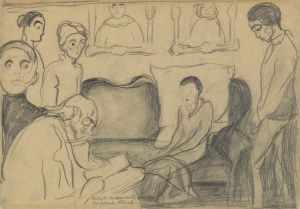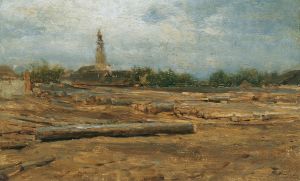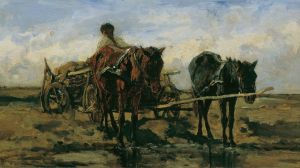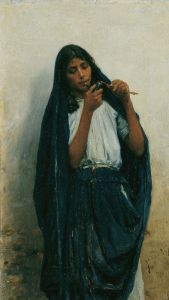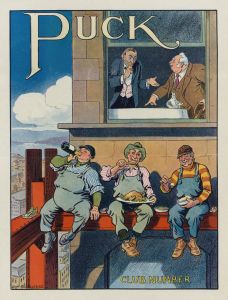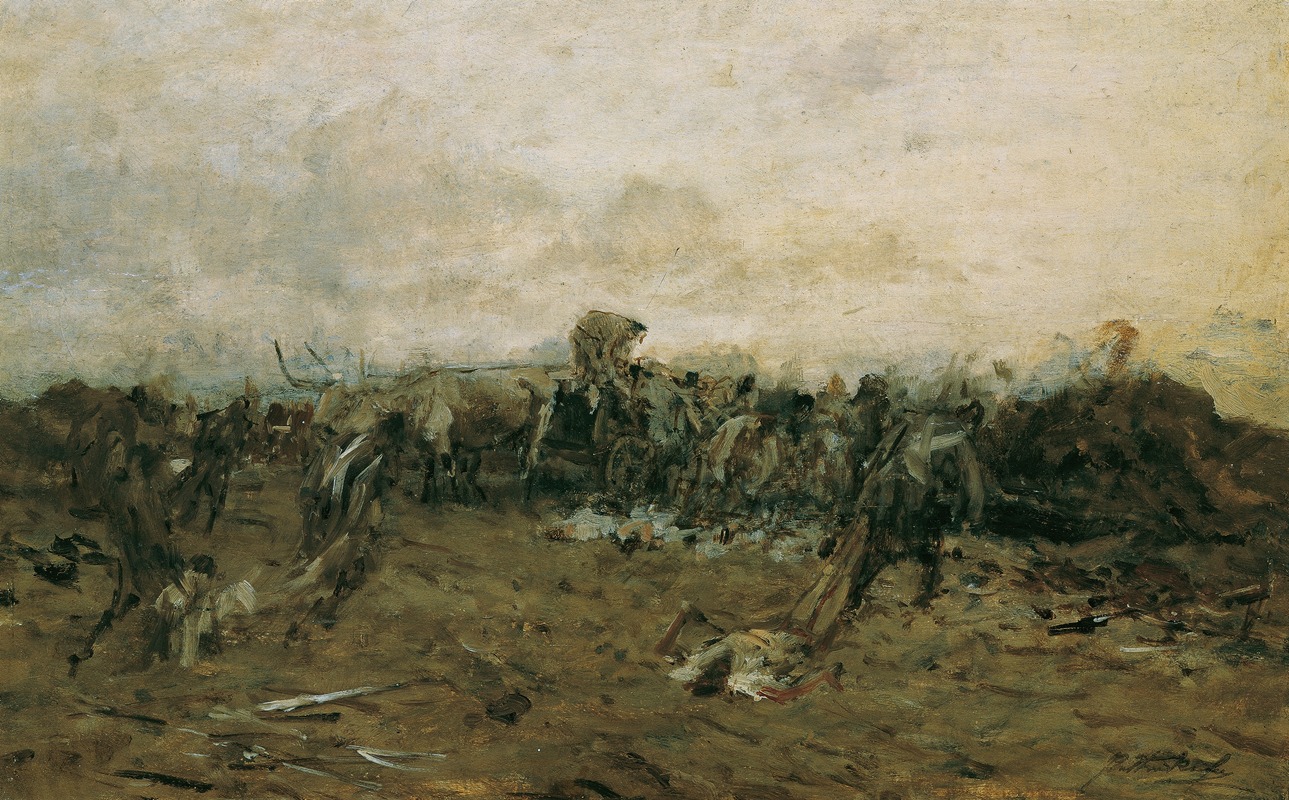
Nach der Schlacht
A hand-painted replica of August von Pettenkofen’s masterpiece Nach der Schlacht, meticulously crafted by professional artists to capture the true essence of the original. Each piece is created with museum-quality canvas and rare mineral pigments, carefully painted by experienced artists with delicate brushstrokes and rich, layered colors to perfectly recreate the texture of the original artwork. Unlike machine-printed reproductions, this hand-painted version brings the painting to life, infused with the artist’s emotions and skill in every stroke. Whether for personal collection or home decoration, it instantly elevates the artistic atmosphere of any space.
August von Pettenkofen (1822–1889) was an Austrian painter known for his depictions of rural life and military scenes, often inspired by his travels in Hungary and his experiences as a war artist. One of his notable works is Nach der Schlacht (translated as "After the Battle"), which reflects his interest in capturing the human and emotional aftermath of conflict.
Nach der Schlacht is an oil painting that portrays the somber and reflective moments following a battle. The composition focuses on the aftermath rather than the chaos of combat, emphasizing the toll of war on individuals and communities. Pettenkofen's style in this work is characterized by a muted color palette and a focus on realism, which was typical of his approach to military and genre scenes. The painting avoids glorifying war, instead presenting a poignant and humanistic perspective.
The exact date of the painting is not definitively documented, but it is consistent with Pettenkofen's body of work during the mid to late 19th century. His experiences as a war correspondent during the Revolutions of 1848 and the Hungarian War of Independence likely influenced his choice of subject matter and his empathetic portrayal of soldiers and civilians.
Pettenkofen's time in Hungary had a significant impact on his artistic development. He frequently visited the Hungarian plains, where he observed and painted the lives of peasants and soldiers. This exposure to Hungarian culture and landscapes is evident in many of his works, including Nach der Schlacht. The painting reflects his ability to combine detailed observation with a deep sensitivity to the emotional and social dimensions of his subjects.
Today, August von Pettenkofen is regarded as an important figure in 19th-century Austrian art, particularly for his contributions to genre painting and his depictions of Hungarian life. His works, including Nach der Schlacht, are held in various museums and collections, though specific details about the current location of this painting are not readily available.
This painting exemplifies Pettenkofen's commitment to realism and his focus on the human condition, making it a significant piece within his oeuvre and a valuable example of 19th-century European art.





